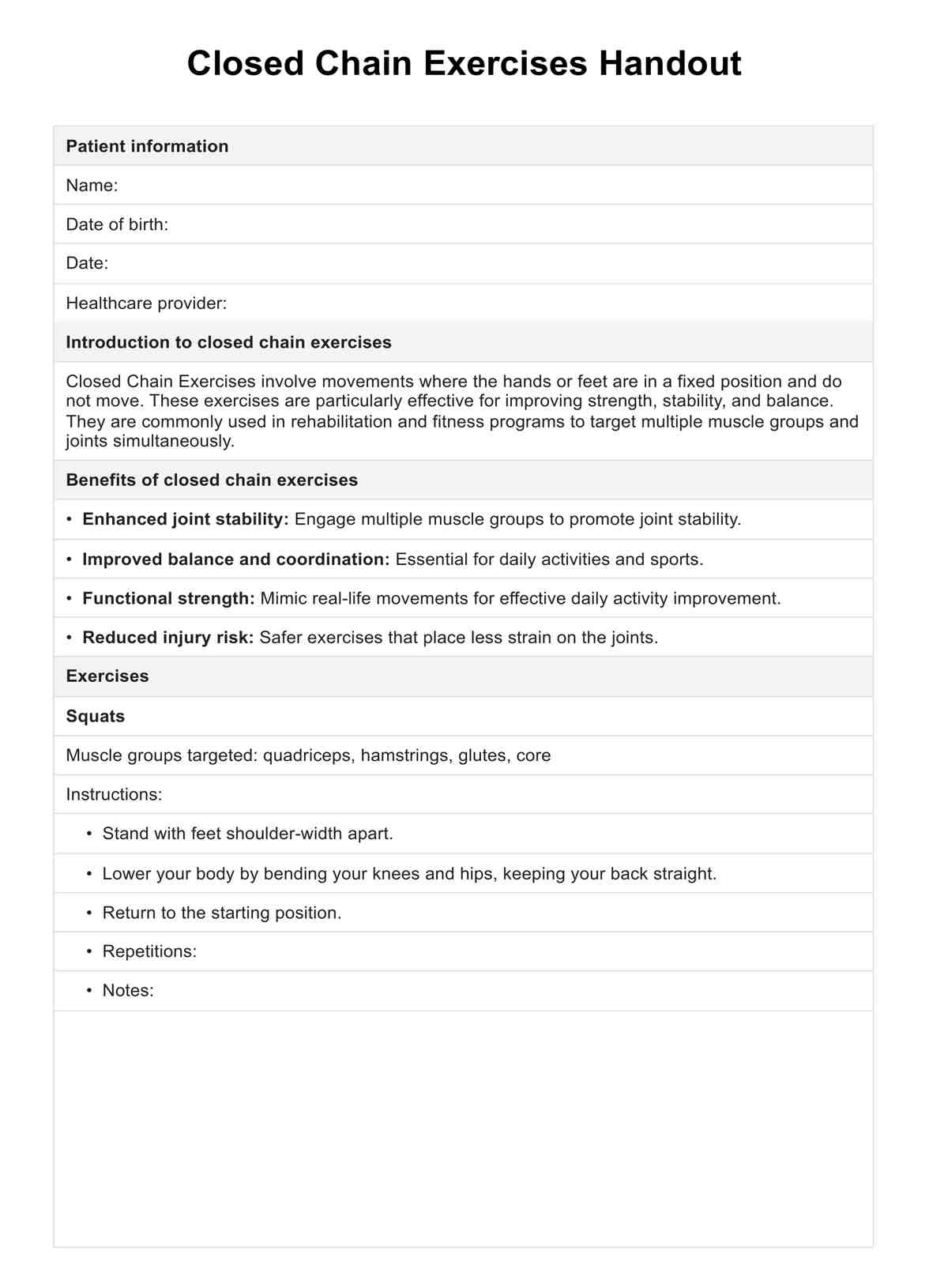Closed kinetic chain exercises involve movements in which the hands or feet remain in a fixed position, simultaneously engaging multiple muscle groups and joints of the human body. They are effective for improving strength, stability, and coordination.

Closed Chain Exercises Handout
Enhance your physical therapy practice with our comprehensive Closed Chain Exercises Handout. Learn the benefits, get sample exercises, and see why Carepatron is essential!
Closed Chain Exercises Handout Template
Commonly asked questions
Closed chain exercises involve fixed positions of the hands or feet, engaging multiple joints and muscle groups. In contrast, open kinetic chain exercises involve movements where the hands or feet are free to move, typically targeting individual muscles.
This handout provides a structured approach to prescribing closed-chain exercises, ensuring patients receive consistent and effective treatment. It also simplifies documentation and enhances patient education, improving adherence and outcomes.
EHR and practice management software
Get started for free
*No credit card required
Free
$0/usd
Unlimited clients
Telehealth
1GB of storage
Client portal text
Automated billing and online payments











